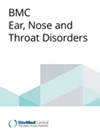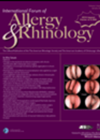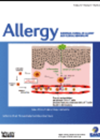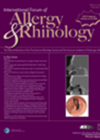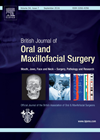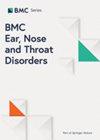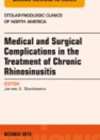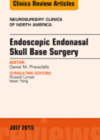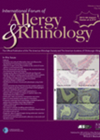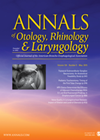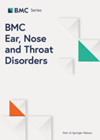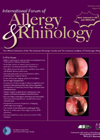
Journal Reviews
Comparison of outcomes after septoplasty
For this prospective study, the authors assessed the quality of life (QoL) with the rhinosinusitis SNOT-20 (Sino-Nasal Outcome Test-20) questionnaire and the symptoms on a visual analogue scale (VAS) in all patients undergoing nasal septal surgery. The patients reported the...
Microbiome changes after endoscopic sinus surgery: all is not what it seems
As we keep fighting a losing battle with bacteria and antibiotics, it becomes clear that it is not about killing bacteria, not even diminishing the bacterial load, but rather about shifting the different types of bacteria that colonise and live...
Sinus surgery effects on asthma patients
Chronic rhinosinusitis (CRS) and asthma are related. The authors identified a gap in the literature and designed this study with a relatively large sample size of 86 patients. They included patients with comorbid asthma and CRS with or without polyps...
FESS for recurrent acute rhinosinusitis: at last, some data
As noted in both the EPOS 2012 and in the (more recent) ICARS 2016, there is a paucity of evidence on the effectiveness of surgery for recurrent acute rhinosinusitis (RARS). The authors used a control group of patients with CRSsNP,...
A multidisciplinary approach to the management of frontal sinus fracture
Frontal sinus fractures account for about 5% of all facial trauma. Fractures of the posterior wall may result in cerebrospinal fluid (CSF) leak and meningitis, while obstruction of the outflow tract can cause sinusitis and mucocele formation. However, there are...
A review of endoscopic sinus surgery outcomes
This review discusses the outcome measures that may be considered in the assessment of patients with chronic rhinosinusitis (CRS) as well as the outcomes of endoscopic sinus surgery (ESS) published so far. The authors also discuss the role of peri-operative...
Do I need Google maps in here?
Image guidance surgery (IGS) has grown in popularity. This review article discusses its application in endoscopic sinus surgery (ESS). IGS technology has vastly improved with smaller, more mobile platforms that are easy to set up and use. IGS allows validation...
CSF leak – endoscopic or open repair?
Cerebrospinal fluid (CSF) rhinorrhoea is well known to the ENT surgeon. It commonly occurs secondary to a predisposing event such as accidental or iatrogenic trauma. When it occurs spontaneously, it can be associated with benign intracranial hypertension. The commonest CSF...
Measuring is understanding: an unsupervised PROM clustering of CRS patients
It has been clear for quite some years, at least for anyone dealing daily with chronic rhinosinusitis (CRS) patients, that CRS is an ‘umbrella’ diagnosis. There are significant differences between patients, including different demographic data, different endoscopic and radiographic images,...
Update on orbital complication of acute sinusitus
This study aims to illustrate the Graz experience. The study is retrospective, 53 patients with orbital complication of sinusitis were examined / confirmed by a University Hospital from 2000 to 2011. Thirty-seven underwent surgery, seven of which experienced a recurrence....
Incidental findings in paranasal sinus Magnetic Resonance Imaging (MRI) studies
Incidental findings in the paranasal sinuses of mucosal thickening and polyps in MRI studies may cause concerns for clinicians and patients. The authors studied MRIs of 982 participants with a mean age of 58.5 years who randomly and independent of...
The effect of cocaine or adrenaline dressing during endoscopic sinus surgery
A randomised controlled study of 37 patients took place that underwent endoscopic sinus surgery for chronic rhinosinusitis and received adrenaline or cocaine-soaked patties. The study showed no difference in the mean surgical field scores between adrenaline and cocaine sides. Adequate...

